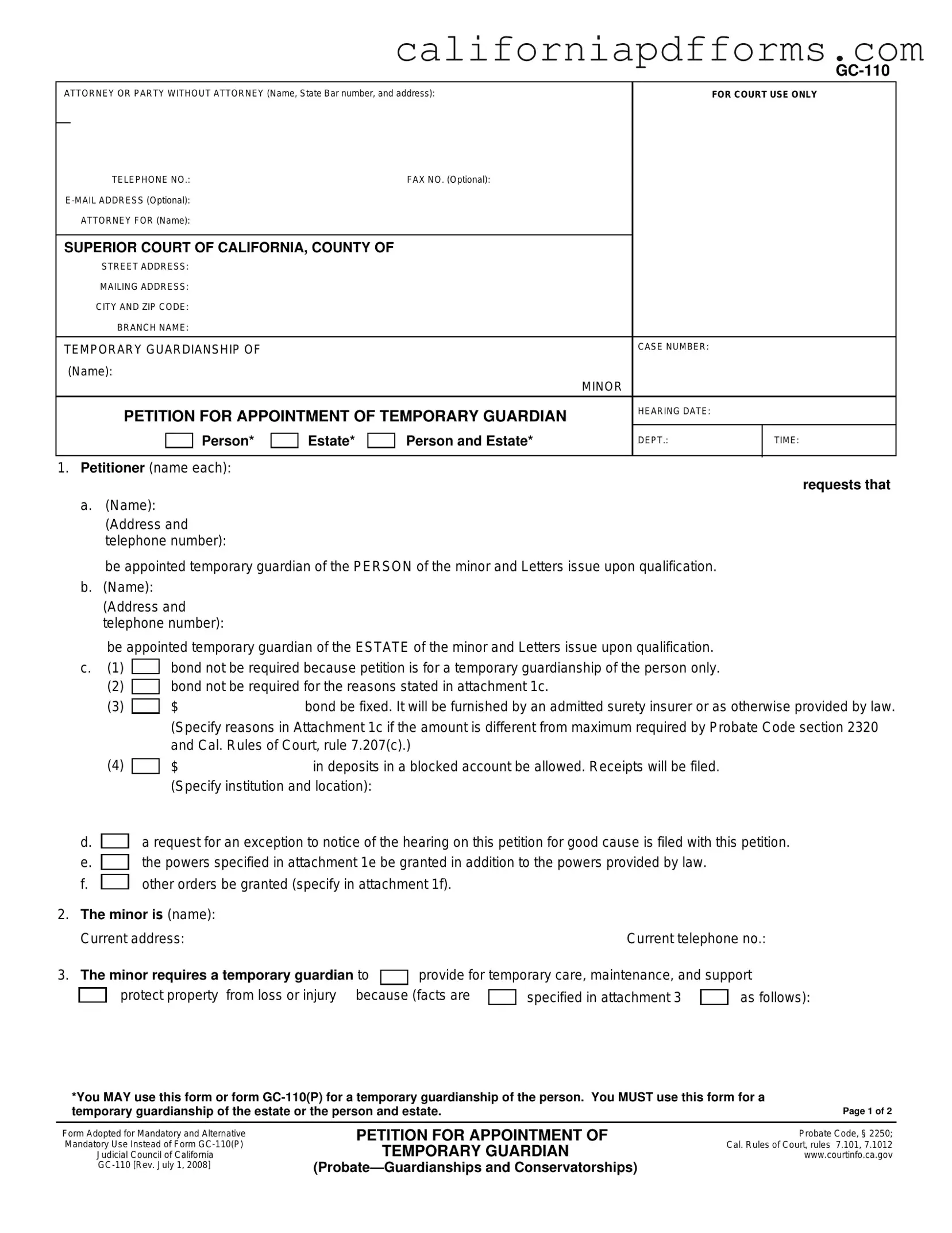Download California Gc 110 Form
The California GC-110 form is a legal document used to petition for the appointment of a temporary guardian for a minor. This form is essential when a minor requires immediate care, maintenance, or support due to specific circumstances. To fill out the GC-110 form, click the button below.
Open Your Form Online
